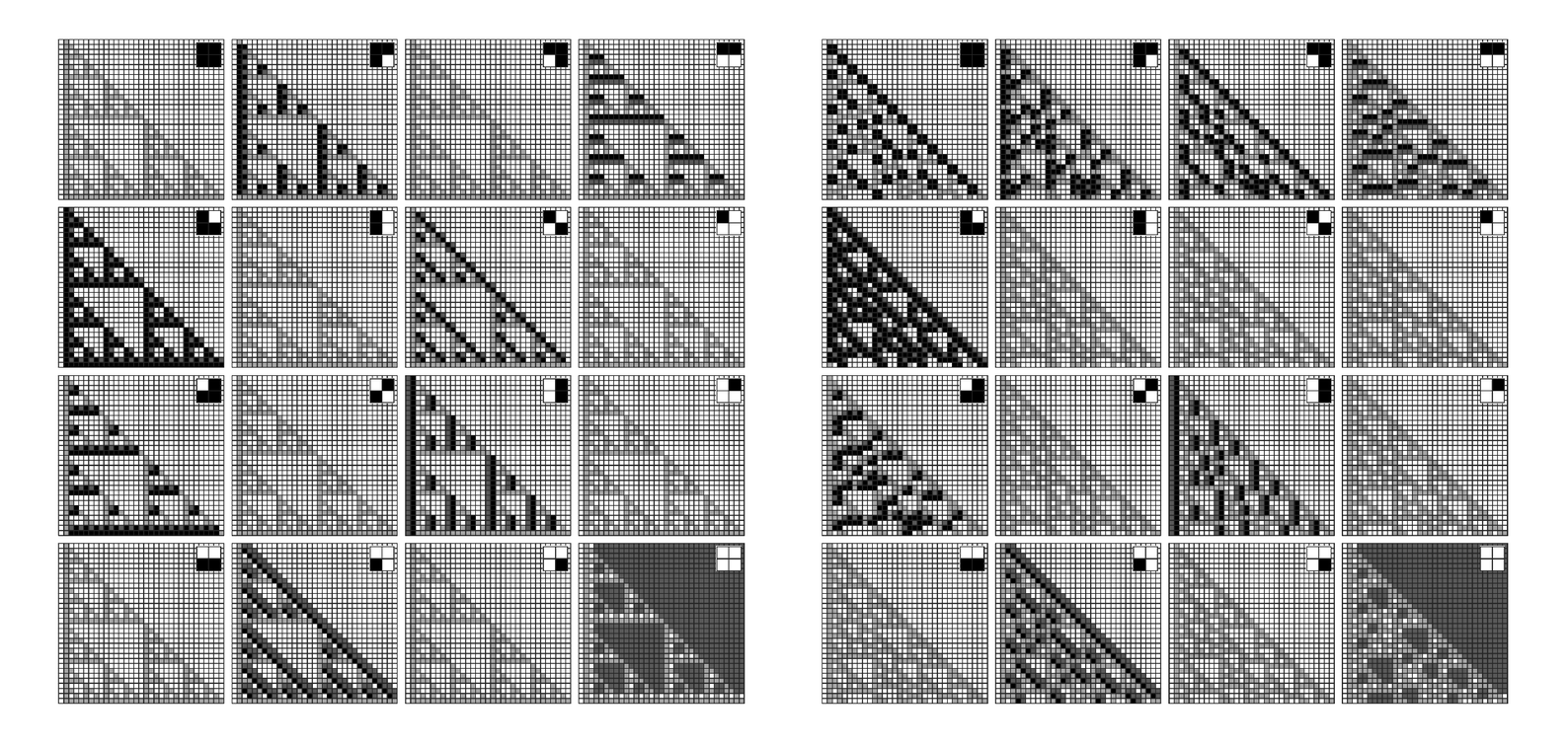So is this very simple kind of process really what underlies our seemingly sophisticated perception of patterns and textures? I strongly suspect that to a large extent it is. An important detail, however, is that there are cells in the visual cortex which in effect receive input from larger regions on the retina. But as a simple idealization one can assume that such cells in the end just respond to repeated versions of the basic 2×2 patterns.
So with this setup, the pictures on the facing page show what happens with an image like the one from page 578. The results are somewhat remarkable. For even though the average density of black and white squares is exactly the same across the whole image, what we see is that in different patches the features that end up being picked out have different densities. And it is this, I suspect, that makes us see different patches as having different textures.
For much as we distinguish colors by their densities of red, green and blue, so also it seems likely that we distinguish textures by their

Responses to the sample images from the previous page by types of cells sensitive to each of the local arrangements of black and white squares shown. In each case, one can think of the resulting patterns as being filtered versions of the original images in which only parts that exhibit particular features are kept. The patterns can also be viewed as outputs from a single step in the evolution of two-dimensional block cellular automata in which the rules specify that a block becomes dark if it has the arrangement of cells shown, and becomes light otherwise. The comparative sparsity of dark blocks is a consequence of the fact that at any given position a dark block can occur in only one of the 16 cases shown. The absence of any dark blocks in many of the cases shown can be viewed as a reflection of constraints introduced by the construction of the images from one-dimensional cellular automaton rules.